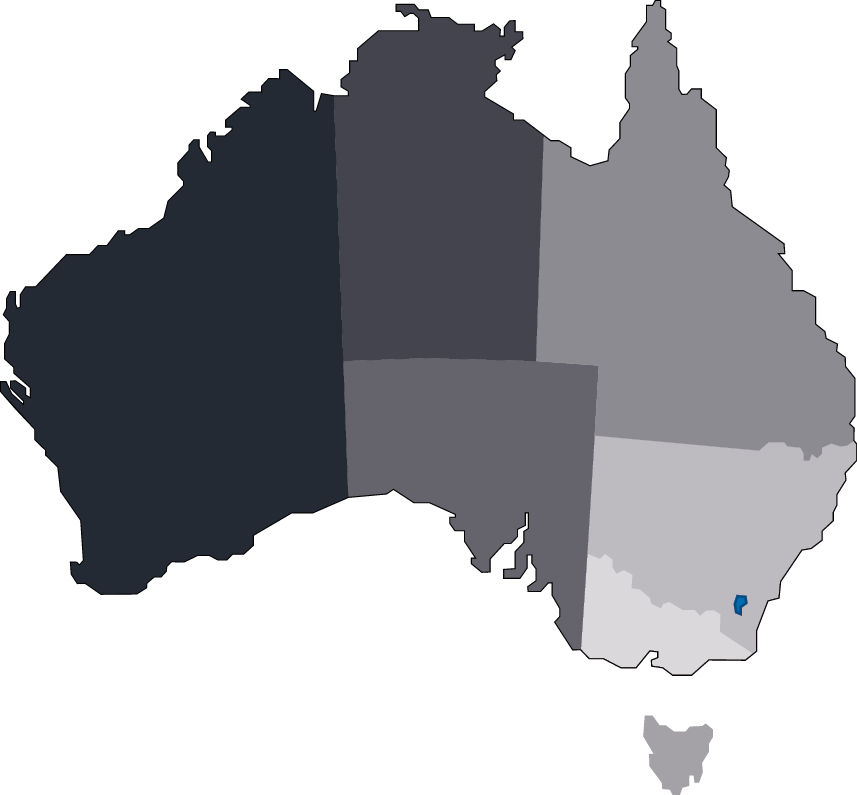NEW REPORT OUT NOW
Productivity growth is the key driver of increasing living standards. Over the past 30 years, labour productivity has contributed around 70 per cent of the growth in Australia’s real gross national income.
Overseas government programs
When dynamic capabilities programs were implemented in New Zealand and Singapore, participating firms expanded into new businesses, products and markets, adopted improved ways of working, and increased collaboration and transformation.
What's the role of government?
Embedding dynamic management capabilities education in existing programs would be a quick and cost-effective way of commencing dynamic capabilities education in Australia.
International programs provide a template
To gain a better understanding of what can be done to help Australian businesses to develop dynamic capabilities, we examined two overseas programs – one run by the New Zealand government that was specifically built using the dynamic capabilities framework, and one run by the Singapore government that has many parallels to dynamic capabilities.
In 2021, the New Zealand government piloted a program aimed at developing the dynamic capabilities of domestic businesses. The program was borne out of the NZ Productivity Commission’s Frontier Firms inquiry, which found that:
Businesses, with support from government, will need to deploy dynamic capabilities to identify areas of competitive advantage in export markets and drive innovation that will push out the productivity frontier; and
High-quality management and governance are important determinants of firm productivity. Evidence suggests that many New Zealand firms lack the leadership capabilities needed to lift their productivity.
The program was run by Callaghan Innovation, the NZ Government’s innovation agency, designed in conjunction with international experts, and delivered by a local consulting firm. It was delivered to a cohort of 24 senior leaders from 12 high-potential firms, with 10 firms completing the program.
Over a few months, the executives participated in three full-day workshops, three one-on-one coaching sessions and a series of cohort sessions. The sessions were structured around the routines, practices and principles of each of the key elements of the dynamic capabilities framework – that is, sensing, seizing and transforming.
The pilot program showed strong results. All participants said it met or exceeded their expectations, and the overall Net Promoter Score was 45 (on a scale of -100 to +100, with a positive score indicating more promoters than detractors). An evaluation of its impact six months after completion found that, as a result of the program:
- 92 per cent of firms embedded beneficial new ways of working
- 75 per cent of firms reported a change in innovation routines
- 70 per cent firms reported specific positive outcomes (e.g., new partnerships)
- Two-thirds of firms changed their management routines and decision making.
While the program focused on developing dynamic capabilities at the firm level, it was also expected to have spillover effects to the broader economy.
Ultimately, developing dynamic capabilities at the firm level is expected to boost productivity and research & development spending at the national level. This is because educating business leaders about dynamic capabilities not only boosts the capabilities of their own organisations, it also establishes a network of like-minded, senior business leaders who can influence capabilities in their wider business ecosystems.
Unfortunately the program has not been run again. Lack of understanding among business leaders of the benefits of dynamic capabilities has been a key challenge in attracting businesses to join the program, as has the clutter of existing business advisory programs in New Zealand.
While the program was small, it showed potential and there could be an opportunity to apply the lessons learnt in New Zealand by trialling a similar program in Australia.
Some government-supported business advisory services, while not built around the dynamic-capabilities framework specifically, do have similar elements. The Singapore government’s Scale-Up SG program is a good example of this.
Scale-Up SG is Enterprise Singapore’s flagship program and has been running since 2019. It hand-picks small local companies that have been identified as having high growth potential and ambitious, committed leadership teams across a range of industries.
It aims to assist these firms to build the capabilities and networks needed to grow, particularly in international markets. Like the New Zealand program, the Singaporean program emphasises the limitations of Singapore’s relatively small domestic market, and the importance of local firms expanding into global markets for long-run growth and success. Ultimately, the program aims to drive innovation and productivity gains that will contribute to the national economy and create good jobs for local workers.
While many overseas governments offer business accelerator programs, Scale-Up SG has strong parallels with the dynamic-capabilities framework. In particular, it emphasises that firms must navigate the uncertainty of a fast-paced, highly competitive environment, and grapple with ways to unlock growth amid ongoing disruption from new competitors and technologies.
The program emphasises that innovation and new business building are critical for firms’ long-run growth and success – focusing on efficiency and savings is not enough. It encourages Singaporean business leaders to be bold and take smart risks.
Scale-Up SG encourages participants to sense opportunities through an in-depth customer identification module and competitor analysis, which participants use to develop strategies for expansion into target markets. It helps participants to seize opportunities through piloting new products, diversifying into new markets and creating an ecosystem where businesses can rapidly identify opportunities for partnerships and collaboration. The program aims to accelerate transformation and growth of firms by building a sustainable pathway to scale and build new businesses.
Each wave of the Scale-Up SG program runs for 12 to 18 months. Enterprise Singapore partners with a suite of management consulting firms to deliver the program, as well as two top-tier international business schools (Stanford Graduate School of Business and The Wharton School of the University of Pennsylvania), who deliver a formal education component akin to a mini-MBA. Similar partnerships with international providers and/or local business schools could also be an option to explore in Australia.
Participating firms are also supported by partnerships and a community of leaders and mentors, creating a network for peer learning, support and advice. Participants have noted how the program establishes mutual trust across businesses much faster than otherwise, making it much easier to establish partnerships and collaborate. The program aims to foster a growing community of like-minded global enterprises, providing support and inspiration to others.
The program reports strong results. An impact analysis of the first three cohorts found that the program had roughly tripled the growth ambition of participants, created around 500 “good” jobs, and supported participating companies to enter more than 30 overseas markets.
Of the 49 companies that had participated in the program at the time of evaluation:
- 85 per cent had launched new businesses or products
- 57 per cent had entered new markets
- 87 per cent had embarked on digital transformation projects
- 75 per cent had discussed collaboration with peers in the program
- 32 per cent had embarked on mergers and acquisitions or joint ventures as a means of expansion
As more businesses complete the program, we can continue to monitor outcomes and learn from their experiences.
The international case studies above demonstrate the potential benefits of government-provided dynamic-capabilities education. They offer a template that Australia could adopt as a practical step towards boosting productivity and innovation.
Such education should be embedded in existing government programs, however, rather than creating new ones. In Australia, as overseas, state and federal governments already offer many business-advisory services, which businesses often struggle to navigate. As such, creating yet another new program would likely be counterproductive. Instead, incorporating dynamic capabilities into existing programs would be the quickest and easiest way for governments to start educating businesses about these capabilities.
As with all government services, good evaluation is critical. Taxpayers need to know they are getting value for money. Evaluation of any dynamic capabilities education is especially important, given this is an emerging area of research and there is still much to learn. Rigorous evaluation of any efforts to boost dynamic capabilities would also greatly improve our understanding of the links between dynamic capabilities, firm performance and productivity growth.
BOOSTING DYNAMIC CAPABILITIES COULD IMPROVE INNOVATION AND PRODUCTIVITY GROWTH
Dynamic capabilities is an emerging area of research, but the evidence so far suggests that firms with stronger dynamic capabilities are more productive, innovative and profitable, increasing their ability to survive and thrive in uncertain environments. Boosting the dynamic capabilities of Australian businesses could therefore be a practical way to improve innovation and productivity growth.
OVERSEAS CASE STUDIES SHOW PROMISING RESULTS
Overseas government programs designed to boost the dynamic capabilities of local businesses, while limited, have so far been highly successful. Our case studies from New Zealand and Singapore found that firms participating in these programs went on to expand into new businesses, products and markets, adopt new and improved ways of working, and increase collaboration and transformation.
TRIALLING EDUCATION PROGRAMS WOULD IMPROVE OUR UNDERSTANDING OF DYNAMIC CAPABILITIES
Trialling dynamic capabilities education in Australia would en- able us to test and evaluate a similar approach. It would also provide a valuable opportunity to improve our understanding of the links between dynamic capabilities, firm performance and productivity growth.
STATE AND FEDERAL GOVERNMENTS COULD EMBED DYNAMIC CAPABILITIES EDUCATION IN EXISTING PROGRAMS
Embedding dynamic management-capabilities education in existing programs would be a quick and cost-effective way of starting dynamic-capabilities education in Australia. At the federal level, it could form a key pillar of the new Industry Growth Program. At the state level, governments should also look to embed this education within their existing business-support programs.


